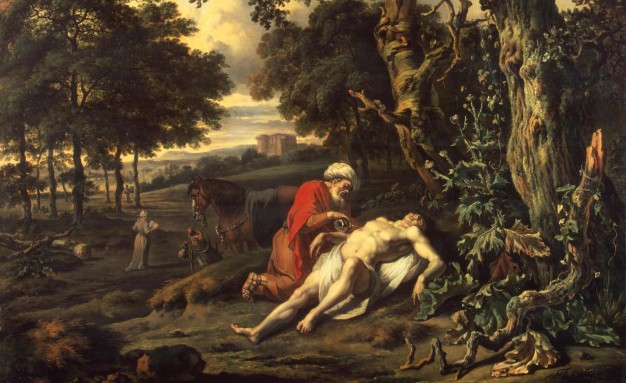

Following Jesus Faithfully
Last week we finished Paul’s Epistle to the Galatians. I enjoyed preaching through this important letter of Paul. In it we learn about the nature of the gospel and life in the Spirit, two things without which the church will inevitably veer off course.
This Sunday we’ll pick up the narrative of Luke’s gospel in the well-known Parable of the Good Samaritan. This text is so well-known that it is difficult to preach on, but I’ll do my best to help us understand how Jesus’ first hearers and Luke’s first readers likely understood the story, and how best we might hear it as we seek to follow Jesus faithfully today.
In context, the Parable of the Good Samaritan comes after Jesus has “set his face to go to Jerusalem” (Luke 9:51), which, as scholar Joel Green observes, demonstrates “the austerity of Jesus’ resolve” and “evokes analogous formulations of prophetic vocation.” Having called his disciples to “deny themselves and take up their cross daily and follow me” (Luke 9:23), spoken with both Moses and Elijah on the Mount of Transfiguration about his imminent “exodus” in Jerusalem (Luke 9:31), and told his disciples that he was going to be “betrayed into human hands” (Luke 9:44), now, along the road from Galilee to Jerusalem, he teaches his disciples, and anyone else who will listen, about the nature of discipleship.
There is great cost – “Foxes have holes, and birds of the air have nests; but the Son of Man has nowhere to lay his head” (Luke 9:58) – yet also great joy – “Blessed are the eyes that see what you see! For I tell you that many prophets and kings desired to see what you see, but did not see it, and to hear what you hear, but did not hear it” (Luke 10:23-24) – in following Jesus, and it is in this context that we come to the Parable of the Good Samaritan.
The challenge for us, as for all Christians anywhere at any time, is to learn what it means to follow Jesus faithfully in the world around us. As Dietrich Bonhoeffer wrote in his book on discipleship, sharing a fundamental insight of the Protestant Reformers, “The only way to follow Jesus was by living in the world.” We live in an increasingly complicated and dangerous world, as we have been reminded this week in chilling ways, with news of massive terrorist attacks abroad as well as the shootings closer to home, in Baton Rouge, Dallas, and St. Paul. Meanwhile, as David Brooks points out, our leaders are increasingly “crazy or clueless” (one might add “corrupt” as well).
It could be that in this tumultuous season in our common life God is using his “megaphone” of pain to “rouse a deaf world,” as C.S. Lewis memorably put it. I don’t believe that God causes pain and suffering, but I do believe that God often uses pain and suffering for his good purposes. Both Jesus’ teachings and his actions demonstrate God’s good intentions for his creation and the divine-image bearers who inhabit it, calling us to remember, in the resonant words of theologian William T. Cavanaugh in Books & Culture, “The way things are is not the way things are meant to be, and not the way things really are in their deepest being.”
What better time, then, for followers of Jesus to ask him, with the expert in the Law, “And who is my neighbor?” (Luke 10:29). Let’s open our hearts and minds to listen to Jesus once more tell this story, and continue to follow our crucified and risen Lord wherever he may lead.
Peace,
Chris
Image: “The Parable of the Good Samaritan” by Jan Wijnants (1670)
